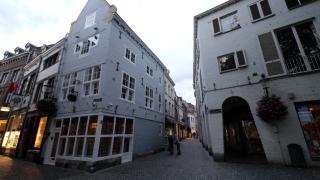Dutch Dining at a Glance
Dutch food culture is shaped by practicality and history. Many Dutch people admit their cuisine is not world-famous. Few restaurants are labeled as "Nederlands" compared to Italian or Indonesian options. Expect bread-based breakfasts and lunches, often with kaas (cheese) or hagelslag (chocolate sprinkles). Dinner usually features aardappelen (potatoes), groenten (vegetables), and vlees (meat). Fast food is popular—snackbars sell kroketten and frikandellen for around €2-€3 each. Lunch is quick and individual, typically between 12:00 and 13:00. Communal dining is rare outside special occasions. Dutch dining times are early: dinner often starts at 18:00. Tap water is free, but coffee costs €2-€3. Tipping is not required but rounding up is common. In cities like Amsterdam, you’ll find Michelin-starred restaurants and diverse international cuisines. Local markets offer stroopwafels and haring. Food is functional, but quality is high. Travelers should seek out traditional eetcafés for stamppot or erwtensoep. The Netherlands rewards food lovers who look beyond first impressions.
Must-Try Dutch Classics
Dutch food culture features unique classics. Many Dutch snacks are sold at street markets and local bakeries. Prices range from €1 for a stroopwafel to €4 for a portion of bitterballen.
- Stroopwafels: Thin caramel-filled waffles. Freshly made at markets in Gouda and Amsterdam. Best eaten warm.
- Haring: Raw herring, served with onions and pickles. Try it from haringkar (herring carts) in cities like Rotterdam. Peak season is May to July. Locals eat it by holding the fish by the tail.
- Bitterballen: Deep-fried meat ragout balls. Found in brown cafés and bars. Usually served with mustard. Portion size: 6-8 pieces.
- Poffertjes: Small, fluffy pancakes. Served with butter and powdered sugar. Available at fairs and street stalls, especially in winter.
- Patat: Thick Dutch fries. Topped with mayonnaise, curry ketchup, or peanut satay sauce. Sold at snackbars (cafeterias) across the country.
- Kaas: Dutch cheese, such as Gouda and Edam. Sample at cheese shops or markets. Cheese tastings cost €5-€10.
Vegetarian/vegan options:
- Kaassoufflé: Deep-fried cheese pastry. Common at snackbars.
- Vegan bitterballen and plant-based kroketten are now available in many Amsterdam cafés.
Most Dutch classics are quick to eat. Street food is popular, especially during lunch breaks and festivals.
Regional Flavors and Local Gems
Dutch regions offer distinct local foods. Geography and history shape these specialties. Coastal Zeeland is known for mosselen (mussels). Mussel season runs July to April. Local restaurants in Yerseke serve fresh mussels for €18–€25 per portion. In the north, Groningen’s eierbal is a popular snack. It is a breaded, deep-fried egg with ragout. Find eierballen at snackbars for about €2.50 each. Limburg, bordering Belgium and Germany, is famous for Limburgse vlaai. This fruit tart is sold in bakeries for €2–€3 per slice. Try it in Maastricht’s Markt square. Friesland offers sûkerbôle, a sweet bread with sugar lumps. Buy it at Leeuwarden markets for €3–€4 per loaf. In the west, Gouda cheese is sold at Gouda’s weekly cheese market (April–August, Thursdays 10:00–13:00). Local herring (haring) is eaten raw with onions. Best in Amsterdam’s Albert Cuypmarkt or Rotterdam’s Markthal, May to July. For authentic experiences:
- Visit regional markets on market days
- Ask locals for family-run bakeries or snackbars
- Try seasonal products for best flavor
Distances between regions are short. Trains connect cities in under three hours.
Dining Etiquette and Habits
Dutch meals follow a set structure.
- Ontbijt (breakfast) is usually bread with cheese, hagelslag (chocolate sprinkles), or jam. Coffee or tea is common.
- Lunch (tussen de middag) is quick and practical. Most eat broodjes (sandwiches) with cheese, ham, or egg. Cafés offer uitsmijter (fried eggs on bread) for €7-€10. Lunch is brief, often 30 minutes, usually between 12:00 and 13:30.
- Dinner (avondeten) is the main meal, eaten at home around 18:00. Typical dishes include potatoes, vegetables, and meat. Eating out for dinner is less common; restaurants fill up after 18:30.
Dining etiquette:
- Bills are usually split (apart betalen). Do not assume one person pays for all.
- Tipping is not required but rounding up or leaving 5-10% is appreciated.
- Keep hands visible at the table, but elbows off.
- Wait for everyone to be served before eating.
Home cooking is valued. Many Dutch invite friends for coffee and cake at home, not full meals. Eating out is reserved for special occasions.
Dutch markets are central to local food culture.
- The Albert Cuypmarkt in Amsterdam is open Monday to Saturday, 9:00–17:00. Over 250 stalls sell cheese, herring, poffertjes, and fresh produce. Prices are usually lower than supermarkets. A stroopwafel costs €1–2. Markthal in Rotterdam is open daily, 10:00–20:00. It features Dutch and international food stands. Farmers' markets (boerenmarkt) operate weekly in most towns, often on Saturdays. Look for local cheese, bread, and seasonal vegetables.
Choosing restaurants in the Netherlands:
- Few places advertise as "Nederlands". Look for menus with stamppot, erwtensoep, or broodje haring. Brown cafés (bruine cafés) often serve Dutch snacks and simple meals. Eetcafés offer affordable daily specials (daghap) for €10–15. Reservations are common for dinner, especially after 18:00.
Menus and ordering:
- Menus list dishes in Dutch, but English translations are common in cities. Ask for "de kaart" (the menu). Tap water is not always free; request "kraanwater" if needed.
Dietary restrictions:
- Vegetarian (vegetarisch) and vegan (veganistisch) options are marked. For allergies, say "ik heb een allergie voor..." and specify. Gluten-free (glutenvrij) is increasingly available.
Tasty Takeaways for Travelers
Try Dutch foods at local bakeries and snack bars.
- Ask for "broodje haring" at fish stalls. Best in spring. Costs around €3.50.
- Order "patat" with mayonnaise from a snackbar. Portions start at €2.50.
- Visit a "brown café" for traditional drinks and snacks. Locals eat early; dinner is often 18:00–20:00.
- Avoid only eating in tourist zones. Explore neighborhoods like De Pijp or Jordaan for authentic options.
- Pay by card; cash is less common. Tipping is not required but rounding up is polite.
- Respect Dutch efficiency—meals are quick, especially lunch. Enjoy the direct, practical service style.
Embrace the local rhythm for a true Dutch food experience.












